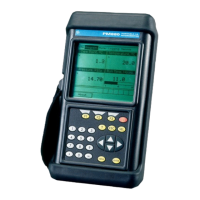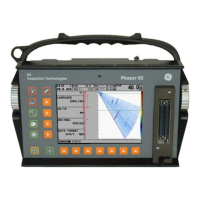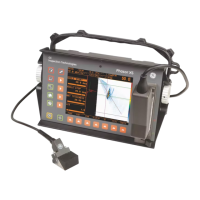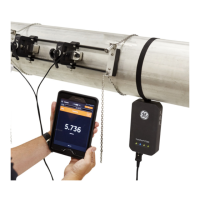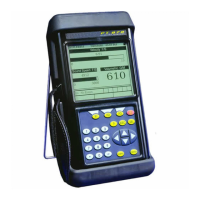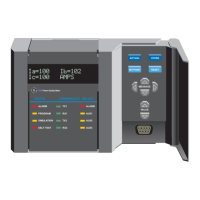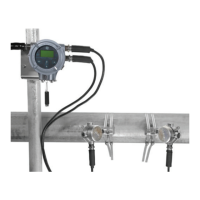5–36 PQMII POWER QUALITY METER – INSTRUCTION MANUAL
CHAPTER 5: SETPOINTS
• DETECT UNDERCURRENT WHEN 0A: If this setpoint is set to “Yes”, undercurrent will be
detected if the average phase current drops below 5% of CT. If the setting is “No”, the
undercurrent detection is only enabled if the average phase current is equal to or
above 5% of CT.
• PHASE OVERCURRENT RELAY: Overcurrent can either be disabled, used as an alarm
or as a process control. Set this setpoint to “Off” if the feature is not required. Selecting
“Alarm” activates the alarm relay and displays an alarm message whenever an
overcurrent condition exists. Selecting an auxiliary relay activates the auxiliary relay
for an overcurrent condition but no message will be displayed. This is intended for
process control.
• PHASE OVERCURRENT LEVEL: When the average (or maximum, see below) three
phase current equals or exceeds the level set by this setpoint, a phase overcurrent
condition will occur.
• PHASE OVERCURRENT DELAY: If the average (or maximum, see below) phase current
equals or exceeds the
PHASE OVERCURRENT LEVEL setpoint value and remains this way for
the time delay programmed in this setpoint, a phase overcurrent condition will occur.
• PHASE OVERCURRENT ACTIVATION: The Phase Overcurrent function can use either
the average phase current or the maximum of the three phase currents. This setpoint
determines which is used.
• NEUTRAL OVERCURRENT RELAY: Neutral overcurrent can be disabled, used as an
alarm, or used as a process control. Set this setpoint to “Off” if the feature is not
required. Selecting “Alarm” activates the alarm relay and displays an alarm message
whenever a neutral overcurrent condition exists. Selecting an auxiliary relay activates
the auxiliary relay for a neutral overcurrent condition but no message will be
displayed. This is intended for process control.
• NEUTRAL OVERCURRENT LEVEL: When the neutral current equals or exceeds the level
set by this setpoint, a neutral overcurrent condition will occur.
• NEUTRAL OVERCURRENT DELAY: If the neutral current greater than or equal to the
NEUTRAL OVERCURRENT LEVEL setpoint value for the time delay programmed in this
setpoint, a neutral overcurrent condition will occur.
• UNDERVOLTAGE RELAY: Undervoltage can either be disabled, used as an alarm, or as
a process control. Set this setpoint to “Off” if the feature is not required. Selecting
“Alarm” activates the alarm relay and displays an alarm message whenever an
undervoltage condition exists. Selecting an auxiliary relay activates the auxiliary relay
for an undervoltage condition but no message will be displayed. This is intended for
process control.
• UNDERVOLTAGE LEVEL: When the voltage on one, two, or three phases drops to or
below this level, an undervoltage condition occurs. The required number of phases is
determined by the
PHASES REQUIRED FOR U/V OPERATION setpoint. To clear the
undervoltage condition, the level must increase to 103% of the
UNDERVOLTAGE LEVEL
setting. For example, if the
UNDERVOLTAGE LEVEL is “4000 V”, the condition clears when
the voltage in the appropriate phase(s) increases above 4120 V (4000
× 1.03). This
hysteresis is implemented to avoid nuisance alarms due to voltage fluctuations.
• UNDERVOLTAGE DELAY: If the voltage drops to or below the
UNDERVOLTAGE LEVEL
setpoint value and remains this way for the time delay programmed in this setpoint,
an undervoltage condition will occur.
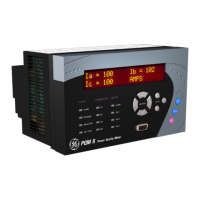
